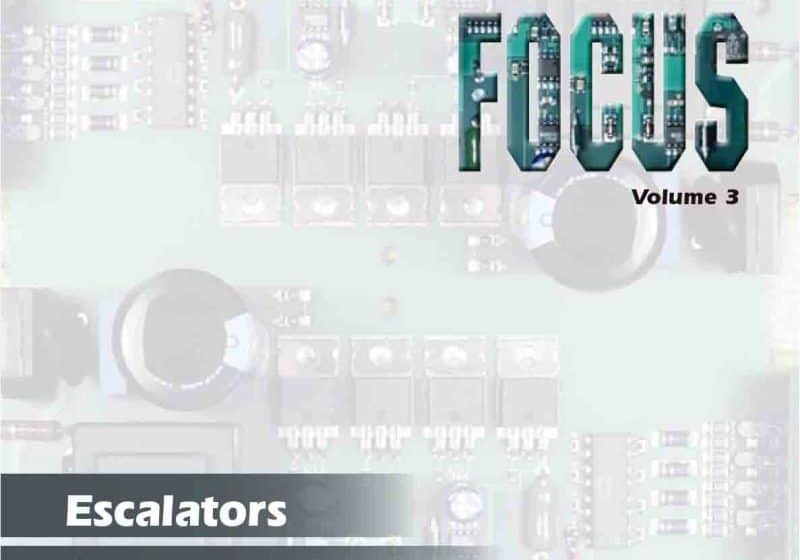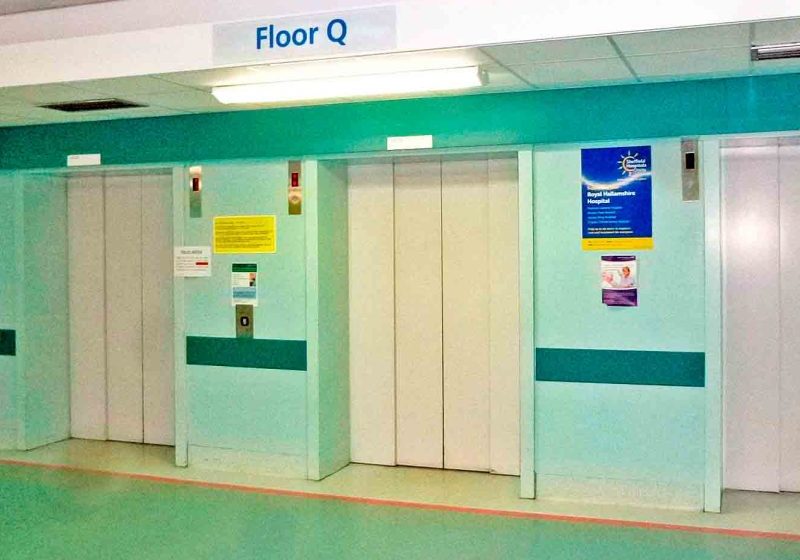Guidance for product-development organizations and an examination of the trend toward worldwide uniform certification
This paper was presented at  Madrid 2016, the International Congress on Vertical Transportation Technologies, and first published in IAEE book Elevator Technology 21, edited by A. Lustig. It is a reprint with permission from the International Association of Elevator Engineers
Madrid 2016, the International Congress on Vertical Transportation Technologies, and first published in IAEE book Elevator Technology 21, edited by A. Lustig. It is a reprint with permission from the International Association of Elevator Engineers  (website: www.elevcon.com).
(website: www.elevcon.com).
With increasing demand for innovative elevator products on a worldwide scale, the developers of innovative products face major challenges in ensuring their equipment will be certified and accepted by enforcing authorities in important markets. While state-of-the-art directives, as well as codes and standards, have been created in recent times, the process of conformity assessment and certification is by no means uniform around the world. This article addresses the various processes being followed in different major markets and provides guidance to product-development organizations. Some trends toward a more uniform certification process on a worldwide basis are discussed.
Introduction
The world economy continues to become increasingly global as access to information becomes better available. As more international trade agreements are negotiated, barriers to the movement of goods and services are reduced. Consumers around the world have become more accustomed to the latest goods and services, irrespective of the original source or origin. In the building industry, property developers seek state-of-the-art building-transportation equipment to maximize the appeal of their buildings.
The building-transportation industry has established an impressive history of safety over many years that is particularly striking, considering the volume of passengers transported daily worldwide. The excellent record of safety is due in part to stringent codes and standards that have been developed and updated over the years, and adopted and enforced broadly through much of the world. Examples of prescriptive standards that have served the industry well for many years are: ASME A17.1/CSA B44, CEN EN 81, CEN EN 115, SAC GB 7588 and the Building Standard Law of Japan.
Prescriptive codes and standards are typically developed by balanced groups of technical experts representing a diverse array of interest categories. The standards-development procedure involves a thorough, deliberate process of analysis, study and debate among experts until consensus is ultimately reached. This includes balloting of proposals, modifying proposed language to address comments received and public review of proposed requirements before publication finally takes place. The thoroughness of the process leads to very effective standards, but the process is, by its very nature, measured and deliberate.
A major trend in recent years has been the rapid advances in technology. This has had dramatic effects on all walks of life, including the elevator industry. Understandably, the pace of development of prescriptive standards has not been able to keep up with the rapidity of innovation enabled by new technology. The prescriptive standards were developed to ensure public safety and never intended to restrict innovation. This is illustrated by the fact that safety codes such as A17.1/B44 recognized that alternative technology should be allowed by the enforcing authorities, provided that equivalent safety to that required by the code could be verified. The code did not, however, provide a uniform structured approach as to how equivalent safety may be validated.
The introduction of the Machinery Directive (MD) and Lifts Directive (LD) in the European Union (EU) provided a viable process for the introduction of innovative technology in Europe. The Directives embraced Essential Health and Safety Requirements (EHSRs) that were expressed largely in performance language, which had to be satisfied by the equipment and facilitated multiple solutions to a given safety function. The directives also included a conformity-assessment process designed to ensure the equipment met the EHSRs and was safe to put on the market. Competent organizations capable of assessing conformity with the directives were accredited in various countries of the EU, and the European Commission was notified of such accreditation. These organizations became known as Notified Bodies (NBs).
The MD and LD were only valid in the EU, and to facilitate the deployment of innovative products worldwide, the ISO 22559 series of standards was developed. These documents provide Global Essential Safety Requirements (GESRs), Global Safety Parameters and guidelines for Global Conformity Assessment Bodies (GCABs). In addition, the ISO 14798 Risk Assessment Methodology Standard was developed to provide a uniform approach to risk assessment of elevator equipment.
The ISO 22559 and 14798 documents have either been adopted or aligned with in several different parts of the world to provide an ordered process for the validation of innovative equipment. This has been helpful to developers of innovative products, although significant challenges remain, both in terms of regional and global implementation of performance-based approaches. The processes in force in various parts of the world are discussed below.
Approval of Innovative Products in the EU
The EU was the first to have a uniform process for the approval and deployment of innovative products. The directives are at the heart of the process and have the force of law behind them. Since the directives have been transposed into the law of each member country, it is only necessary to obtain approval by an NB in one European country in order to have EU-wide acceptance. Moreover, the directives spawned the harmonization of key prescriptive standards, without national deviations, such as EN 81 and 115, which provide a presumption of conformity to the directives. For standard products, meeting the harmonized standards is a way of meeting the directives.
For innovative products, the simplest approach in the EU is to basically follow the harmonized codes, e.g., EN 81 in the case of elevators. When the innovative product differs from EN 81, the relevant EHSRs of the directives are identified and satisfied. It should be noted that the LD requires compliance with the MD, as well. Thus, it is important that the EHSRs from both the LD and MD are considered.
By way of a simple example, suppose that an elevator manufacturer wishes to use several 6-mm-diameter steel-wire ropes in the suspension system of an elevator design, instead of the 8-mm minimum required by EN 81. The LD and MD do not constrain the diameter to be used. The manufacturer would identify the relevant EHSRs from the LD and MD and conduct a risk assessment on the proposed design using ISO 14798 or a similar methodology. The risk assessment is typically carried out by a team of experts who have knowledge and experience pertinent to the equipment being studied. The risk assessment requires the identification, evaluation and sufficient mitigation of all hazards relating to the use of the equipment being studied. In the case of the suspension-means example, mitigation of risk would require protective measures dictating that the factors of safety compatible with EN 81 be applied. Moreover, inspection criteria relating to the particular rope characteristics would be necessary.
On completion of a comprehensive risk assessment, a Technical Dossier would be created that contained complete technical information relating to the design, as well as the risk-assessment document and a listing of the EHSRs in the MD and LD that have been addressed in the dossier. The dossier would also contain maintenance and inspection information pertaining to the equipment being certified. It would be presented to any NB accredited to certify elevator systems. The conformity-assessment process can be prolonged, and the NB may request additional information or reevaluation of any portion of the dossier, including the risk assessment. The NB may also request demonstrations of the actual equipment or witness tests, or take any further action believed to be necessary.
The NB is under no obligation to approve the submittal. When it is satisfied that the MD and LD have been met, a certificate to that effect is provided. It is important to note that such certification is valid throughout the EU.
Approval of Innovative Products in North America
As the demand for innovative products increased in North America, it became evident that the A17.1/B44 code provisions that allow alternative equipment, as long as equivalent safety could demonstrated, were insufficient due to the absence of a validation process. It was concluded that a more structured approach would be helpful to both Enforcing Authorities and manufacturers. To this end, ASME A17.7/CSA B44.7 was developed based upon the ISO 22559-1 GESRs and ISO 14798 Risk Assessment Methodology. The standard describes the process to be used to establish safety using the GESRs, and it provides a list of safety parameters consistent with the A17.1/B44 prescriptive code. To provide independent verification and certification of equipment developed in compliance with A17.7/B44.7, Accredited Elevator/Escalator Certification Organizations (AECOs) were created. These organizations are accredited by the American National Standards Institute (ANSI) to A17.7.1/B44.7.1, which is based on ISO/IEC 17065:2012 (formerly ISO/IEC Guide 65). Currently, two such organizations, Underwriters Laboratories and Liftinstituut, are operating in North America.
While A17.7/B44.7 is intended to facilitate the certification of innovative products in North America in a similar manner to that afforded by the EU directives, there are important differences. The MD and LD are national laws in the member countries of the EU: hence, the universal acceptance of certificates throughout the EU. A17.7/B44.7 is a voluntary standard that only acquires the force of law when adopted and enshrined in statutes in a given jurisdiction. The U.S. and Canada are federations of states and provinces, respectively, each of which has the authority to regulate elevator safety according to its particular needs. Since the publication of A17.7/B44.7 in 2007, most jurisdictions in Canada and many in the U.S. have adopted the standard. Most that have not yet adopted it require an AECO certification as a minimum before considering approval based on the principle of equivalent safety to that provided by A17.1/B44.
A17.7/B44.7 includes 48 GESRs, and certification can be obtained by meeting all of them or by identifying relevant GESRs pertaining to aspects of the innovative equipment that differ from the requirements of A17.1/B44. In general, the former process would be most useful in the case of highly unconventional equipment. In most practical cases, the equipment conforms to a large extent to the requirements of A17.1/B44, and it is most pragmatic to focus on the particular aspects that deviate from or are not addressed by the prescriptive standard. Once the GESRs are identified, a risk assessment is conducted, and mitigation of risk is performed in very much the same manner as described in the previous section “Approval of Innovative Products in the EU” for the EU. Ultimately, a Code Compliance Document (CCD) is produced and presented to the AECO or directly to the AHJ. The CCD includes a description of the equipment, the items being addressed by A17.7/B44.7 and the GESRs pertaining to them. In addition, technical documentation to demonstrate conformity; the risk assessment study; and procedures for testing, inspection and maintenance of the items to be certified are included. The AECO will review the documentation and may request additional information, carry out or witness tests, or take any further action believed to be necessary. When satisfied that the requirements of A17.7/B44.7 have been fulfilled, the AECO will certify the product.
The A17.7/B44.7 code provides a good working model as to how the ISO 22559 and 14798 documents may be incorporated into national standards.
Approval of Innovative Products in China
China continues to be the largest elevator market in the world, as well as an important progressive country in terms of innovative products. To facilitate the introduction of innovative products, China utilizes the ISO 22559-1 standard in its process. If a manufacturer wishes to gain approval for particular innovative equipment, it would identify areas where the equipment deviates from the GB 7588 code (which is similar to the EN 81 code). The ISO 22559-1 GESRs pertaining to the aspects identified would be listed as the objectives of a risk assessment based on ISO 14798. The protective measures emanating from the mitigation of these risks would form the basis for a Technical Compliance Document (TCD), which would contain design and test data, as well as the risk assessment document and inspection and field testing procedures.
The manufacturer would then apply to the General Administration of Quality, Supervision, Inspection and Quarantine (AQSIQ) for approval of the innovative product. AQSIQ will allocate one of four elevator inspection and testing centers, which it authorizes, to review the application. These centers are as follows: the National Elevator Inspection and Test Center in Langfang; Shanghai Jiao Tong University Elevator Test Centre; Shenzhen Institute of Special Equipment Inspection & Test; and Guangzhou Institute of Special Equipment. These centers are accredited by the China National Accreditation Service for Conformity Assessment.
Once the inspection and test center has been identified, the manufacturer submits the application and the TCD containing all relevant information required by ISO 22559-1 to the inspection and test center. The inspection and test center will evaluate the TCD and request additional information, carry out or witness tests, or take any further action deemed necessary.
Once the inspection and test center has carried out its review, the application and TCD are sent to the Standards Association of China (SAC) 196 Committee, which is composed of codes and standards experts, manufacturing-industry volunteers, as well as representatives of Transportation Safety Boards (TSBs), which are responsible for the adoption and enforcement of safety standards in various jurisdictions. The SAC 196 committee will review the documentation and has the authority to approve or disapprove a product, even though it has been reviewed and deemed acceptable by an inspection and testing center. Moreover, it is possible for competitors to be included in the SAC 196 committee. These can be excluded on request to the committee, although this can cause additional delays.
After the SAC 196 committee approves the submittal, it is returned to the inspection and testing center for minor refinement and then submitted to AQSIQ for final approval. The final approval is typically administrative in nature, as all the technical issues will have been resolved by this stage.
The overall process is very thorough and can be quite time consuming. The comprehensive nature of the process, particularly the inclusion of representatives from the TSBs, gives a high degree of confidence that the product will ultimately be accepted by enforcing authorities throughout the country.
Approval of Innovative Products in Other Major Market Areas
While the ISO 22559 series of documents and ISO 14798 have not been adopted everywhere, certification demonstrating compliance with these is a strong starting point to gain approvals for innovative products in specific areas. This is particularly true in areas with prescriptive codes aligned with EN 81 or A17.1/B44. However, even in such countries, local approval is necessary, and this can be a demanding task. Japan is a major country in which the Building Standard Law of Japan is enforced. The introduction of innovative products is possible and requires special application and review at the government level.
Challenges for Developers of Innovative Products
While the approval processes for innovative products in effect in the EU, North America and China bear significant similarity, considerable differences remain at the detail level. This is particularly applicable to equipment that conforms, to a large extent, to the requirements of the prescriptive code, deviations from which are being addressed. The fact that the major prescriptive codes are not harmonized and that there are also differences between the EHSRs of the directives on the one hand and the GESRs of ISO 22559 on the other makes the certification more difficult for global products. Recent revisions to the ISO 22559-1 standard includes an annex that compares the MD and LD EHSRs to those of the GESRs, which is very useful in addressing this issue. It is, however, important to note that the major obstacle to global products remains the differences between prescriptive codes. This affects standard, as well as innovative products.
Looking Toward the Future
Much progress has been made in the development and adoption of directives and performance-based standards. Much work to create an environment in which mutual recognition of certifications on a global basis is realized still lies ahead. To this end, ISO 22559-3 and -4 have been developed based on ISO/IEC 17065 to harmonize the methodology for accreditation of certification organizations, as well as their roles, responsibilities and processes. These standards provide a path for accreditation of certification organizations as GCABs. It is conceivable to envisage a world in which one product certification anywhere is acceptable everywhere. It is a challenging goal but one well worth pursuing.
Get more of Elevator World. Sign up for our free e-newsletter.









